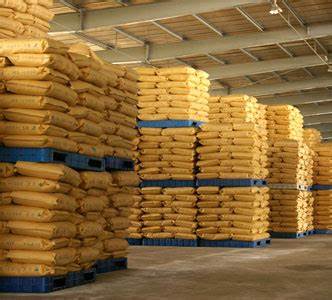Description
Overview
Polyethylene wax (PE wax), also known as polymer wax or polyethylene wax for short. It is widely used due to its excellent cold resistance, heat resistance, chemical resistance and wear resistance. In normal production, this part of wax can be directly added to polyolefin processing as an additive, which can increase the gloss and processing performance of the product. As a lubricant, it has stable chemical properties and good electrical properties. Polyethylene wax has good compatibility with polyethylene, polypropylene, polyvinyl acetate, ethylene propylene rubber and butyl rubber. It can improve the fluidity of polyethylene, polypropylene, ABS and the demoulding properties of polymethyl methacrylate and polycarbonate. Compared with PVC and other external lubricants, polyethylene wax has a stronger internal lubrication effect.
Applications
- Concentrated masterbatch and filler masterbatch. It is used as a dispersant in masterbatch processing and is widely used in polyolefin masterbatch. It has good compatibility with resins such as polyethylene, polyvinyl chloride, and polypropylene, and has excellent external and internal lubrication.
- PVC profiles, pipes, and composite stabilizers. It is used as a dispersant, lubricant, and brightener in the molding process of PVC profiles, pipes, pipe fittings, PE, and PP to enhance the degree of plasticization and improve the toughness and surface smoothness of plastic products. It is also widely used in the production of PVC composite stabilizers.
- Ink It has good light resistance and chemical properties. It can be used as a carrier for pigments, improve the wear resistance of paints and inks, improve the dispersibility of pigments and fillers, and has a good anti-sedimentation effect. It can be used as a flatting agent for paints and inks to give the products good gloss and three-dimensional effect.
- Wax products It is widely used in the production of various wax products such as floor wax, car wax, polishing wax, candles, crayons, etc., to increase the softening point of wax products and increase their strength and surface gloss.
- Cable material: used as lubricant for cable insulation material, it can enhance the diffusion of filler, increase extrusion molding rate, increase mold flow, and facilitate demolding.
- Hot melt products: used as dispersant for various hot melt adhesives, thermosetting powder coatings, road marking paints, and line drawing paints, it has a good anti-settling effect and makes the products have good gloss and three-dimensional sense.
- Rubber: used as rubber processing aid, it can enhance the diffusion of filler, increase extrusion molding rate, increase mold flow, facilitate demolding, and improve the surface brightness and smoothness of the product after demolding.
- Cosmetics: make the product have good gloss and three-dimensional sense.
- Injection molding: save machine power lubrication and enhance the surface gloss of the product.
Scope of application
- Due to its excellent external lubrication and strong internal lubrication, it has good compatibility with resins such as polyethylene, polyvinyl chloride, and polypropylene, and can be used as a lubricant in extrusion, calendering, and injection processing. It can improve processing efficiency, prevent and overcome the adhesion of films, pipes, and sheets, improve the smoothness and gloss of finished products, and improve the appearance of finished products.
2 .As a dispersant for concentrated color masterbatches of various thermoplastic resins and a lubricating dispersant for filler masterbatches and degradation masterbatches, it can improve the processing performance, surface gloss, lubricity and thermal stability of HDPE, PP and PVC.
3 .As a lubricant for cable insulation materials, it can enhance the diffusion of fillers, increase the extrusion molding rate, increase the mold flow rate, and facilitate demolding.
4 .As a rubber processing aid, it can enhance the diffusion of fillers, increase the extrusion molding rate, increase the mold flow rate, and facilitate demolding.
5 . It has good light resistance and chemical properties, can be used as a pigment carrier, can improve the wear resistance of paints and inks, improve the dispersibility of pigments and fillers, prevent pigments from sinking to the bottom, and can be used as a flatting agent for paints and inks.
6 . As a softener and lubricant for natural or synthetic fibers, it improves wear resistance, tear strength, wrinkle resistance and sewing properties of iron-free clothes, reduces needle cutting and adjusts touch.
- It can improve the gloss, durability, hardness and wear resistance of paper, increase water resistance and drug resistance, etc., and increase the beauty of paper.
- It can be added to various paraffin waxes to improve its performance. It has excellent electrical insulation properties. When added to insulating oil, paraffin wax or microcrystalline paraffin wax, its softening temperature, viscosity and insulation properties are increased. It can be used for cable insulation, moisture-proof coating of capacitors and transformer windings.
- In addition, it can also be used to make shoe polish, candles, crayons, cosmetics, leather agents, hot melt adhesives, etc.
Main application scope: It can be widely used in the manufacture of masterbatch, granulation, plastic steel, PVC pipes, hot melt adhesives, rubber, shoe polish, leather brightener, cable insulation, floor wax, plastic profiles, inks, injection molding and other products.
Grades
WE type polyethylene wax:
| Indicator name | WE-2 | WE-3 | WE-N |
| Exterior | White flakes or particles | ||
| Average molecular weight (Mn) | 2000-3000 | 3000-5000 | 5000-10000 |
| Softening point/℃ | 100-102.9 | 103-105.9 | 106-110 |
H1001 type polyethylene wax:
| Melting point | Hardness | Density
G/GM3-25℃ |
Viscosity (CPSS140℃) | Molecular weight | Physical properties |
| 90-116℃ | 3-8 | 0.90-0.92 | 50-100 | 1500-3500 | White flakes or particles |










